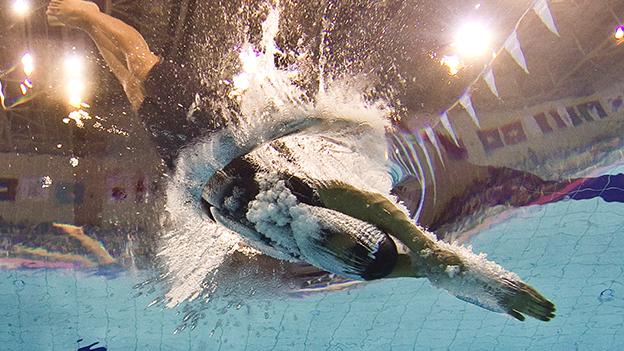[ad_1]

Fina, swimming’s world governing body, has voted to stop transgender athletes from competing in women’s elite races if they have gone through any part of the process of male puberty.
The new policy requires transgender competitors to have completed their transition by the age of 12 in order to be able to compete in women’s competitions.
Fina will also aim to establish an ‘open’ category at competitions for swimmers whose gender identity is different than their birth sex.
The new policy, which was passed with 71% of the vote from 152 Fina members, was described as “only a first step towards full inclusion” for transgender athletes.
The decision was made during an extraordinary general congress at the ongoing World Championships in Budapest.
Earlier Fina members heard a report from a transgender task force made up of leading figures from the world of medicine, law and sport.
“Fina’s approach in drafting this policy was comprehensive, science-based and inclusive, and, importantly, Fina’s approach emphasised competitive fairness,” said Brent Nowicki, the governing body’s executive director.
Fina’s decision follows a move on Thursday by the UCI, cycling’s governing body, to double the period of time before a rider transitioning from male to female can compete in women’s races.
The issue in swimming has been catapulted into the spotlight by the experiences of American Lia Thomas.
In March, Thomas became the first known transgender swimmer to win the highest US national college title with victory in the women’s 500-yard freestyle.
Thomas swam for the Pennsylvanian men’s team for three seasons before starting hormone replacement therapy in spring 2019.
She has since broken records for her university swimming team.
More than 300 college, Team USA and Olympic swimmers signed an open letter in support of Thomas and all transgender and non-binary swimmers, but other athletes and organisations have raised concerns about trans inclusion.
Some of Thomas’ team-mates and their parents wrote anonymous letters supporting her right to transition, but added it was unfair for her to compete as a woman.
USA Swimming updated its policy for elite swimmers in February to allow transgender athletes to swim in elite events, alongside criteria that aim to reduce any unfair advantage, including testosterone tests for 36 months before competitions.
Last year, weightlifter Laurel Hubbard from New Zealand became the the first openly transgender athlete to compete at an Olympics in a different sex category to that in which they were born.
One of sport’s biggest debates
The conversation around the inclusion of transgender women in women’s sport has divided opinion both inside and outside the sporting sphere.
Many argue transgender women should not compete in women’s sport because of any advantages they may retain – but others argue sport should be more inclusive.
World Athletics president Lord Coe has said the “integrity” and “future” of women’s sport would be “very fragile” if sporting organisations get regulations for transgender athletes wrong.
The heart of the debate on whether transgender women athletes should compete in women’s sport involves the complex balance of inclusion, sporting fairness and safety – essentially, whether trans women can compete in female categories without giving them an unfair advantage or presenting a threat of injury to competitors.
Trans women have to adhere to a number of rules to compete in specific sports, including in many cases lowering their testosterone levels to a certain amount, for a set period of time, before competing.
There are concerns, however, as highlighted in Fina’s decision, that athletes retain an advantage from going through male puberty that is not addressed by lowering testosterone.
More to follow.
[ad_2]
Source link




